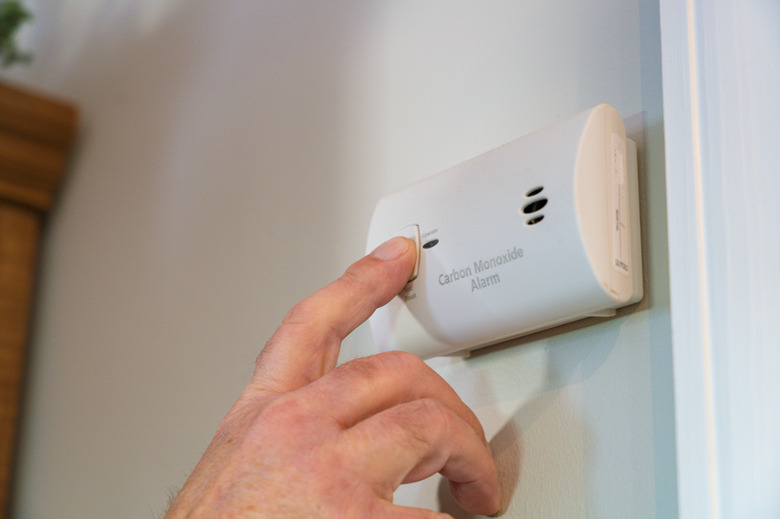How To Determine If Carbon Monoxide Detectors Work
We may receive a commission on purchases made from links.
Maintaining your carbon monoxide (CO) detector is one easy step that can protect you and your loved ones from serious harm. More than 20,000 Americans visit the emergency room each year because of CO poisoning, per the Centers for Disease Control and Prevention, and more than 400 are killed each year by it. Your CO detectors can only alert you to the presence of this colorless, odorless gas if they're functioning, so regular testing is essential. (You may need to install carbon monoxide detectors in multiple rooms of your home, so be sure to test each unit every time.)
Testing a Carbon Monoxide Detector
Testing a Carbon Monoxide Detector
To test that a smoke detector is working, you can light a match and create actual smoke for it to detect. Unfortunately, there's no good way for individuals to verify that a CO detector is functioning well enough to identify carbon monoxide fumes because there's not a safe way to introduce CO fumes into your home as a test. So, when talking about testing your CO detector, it entails making sure the unit is receiving electricity and that its alarm function is working.
There's some variation in how different CO detector systems are configured, so there's no one-size-fits-all approach to testing CO alarms. If your unit is part of a hardwired home security system, for example, you may need to follow instructions provided by your security monitoring company to test your detector without setting off the entire system.
If you have a basic stand-alone CO detector, it will probably have a "Test" button on the front. Pressing and holding this button should make the alarm sound. If you hold the button for more than 20 seconds without hearing the alarm, it's likely time to replace your unit. Set a recurring alarm on your phone to remind yourself to test the CO detector once a month.
Maintaining Carbon Monoxide Detectors
Maintaining Carbon Monoxide Detectors
Many kinds of CO detectors use replaceable batteries. (If you have a 10-year sealed carbon monoxide detector that uses a lithium-ion battery, there's no replaceable battery. Instead, you'll need to buy a new unit when the battery dies.) Even if you use plug-in carbon monoxide detectors that only use batteries as backup, keeping batteries fresh is essential because a CO leak could happen during a power outage, and you'll need functional batteries. You can use rechargeable batteries, but make sure to swap them out every month when you test the unit.
Different types of CO detectors have different life spans, but most will only last for five to 10 years. You can replace your units every five years to be on the safe side, or make note of the service date printed on the unit and replace it before that date. Choose new carbon monoxide detectors with digital displays. Read the detector's display to determine how much carbon monoxide gas is in the air in your home.
Reacting to a Carbon Monoxide Leak
Reacting to a Carbon Monoxide Leak
If your CO detector goes off, never assume it's a false alarm. Get people and pets out of the building and into fresh air. Call 911 if anyone is experiencing symptoms of CO poisoning, or call the fire department if everyone feels OK. Don't go back into the building until the fire department has given the all-clear.
Hopefully, your CO detector will be fully operational if a leak ever does happen in your home. You can't be too careful, so it's a good idea for everyone to know how to identify the symptoms of CO poisoning. Dizziness, confusion, shortness of breath, nausea, vomiting and chest pains are all common signs. People often become unconscious when their CO level becomes dangerously high. If you have pets, you may notice they develop symptoms before any people living in the home do.
If you notice any of the symptoms of carbon monoxide poisoning developing in yourself or any other member of your household, leave the building and seek medical attention right away. It's common for CO leaks to happen in winter when homes are sealed up and a lot of fuel- and gas-powered heating sources are being used, but a leak can happen at any time.
